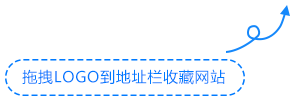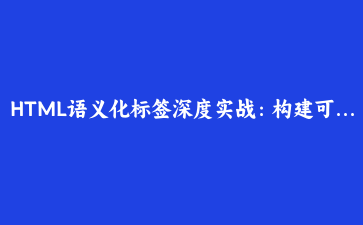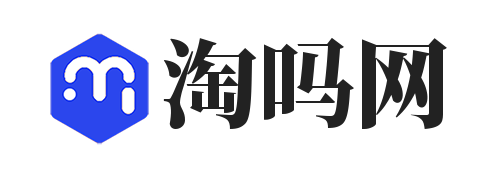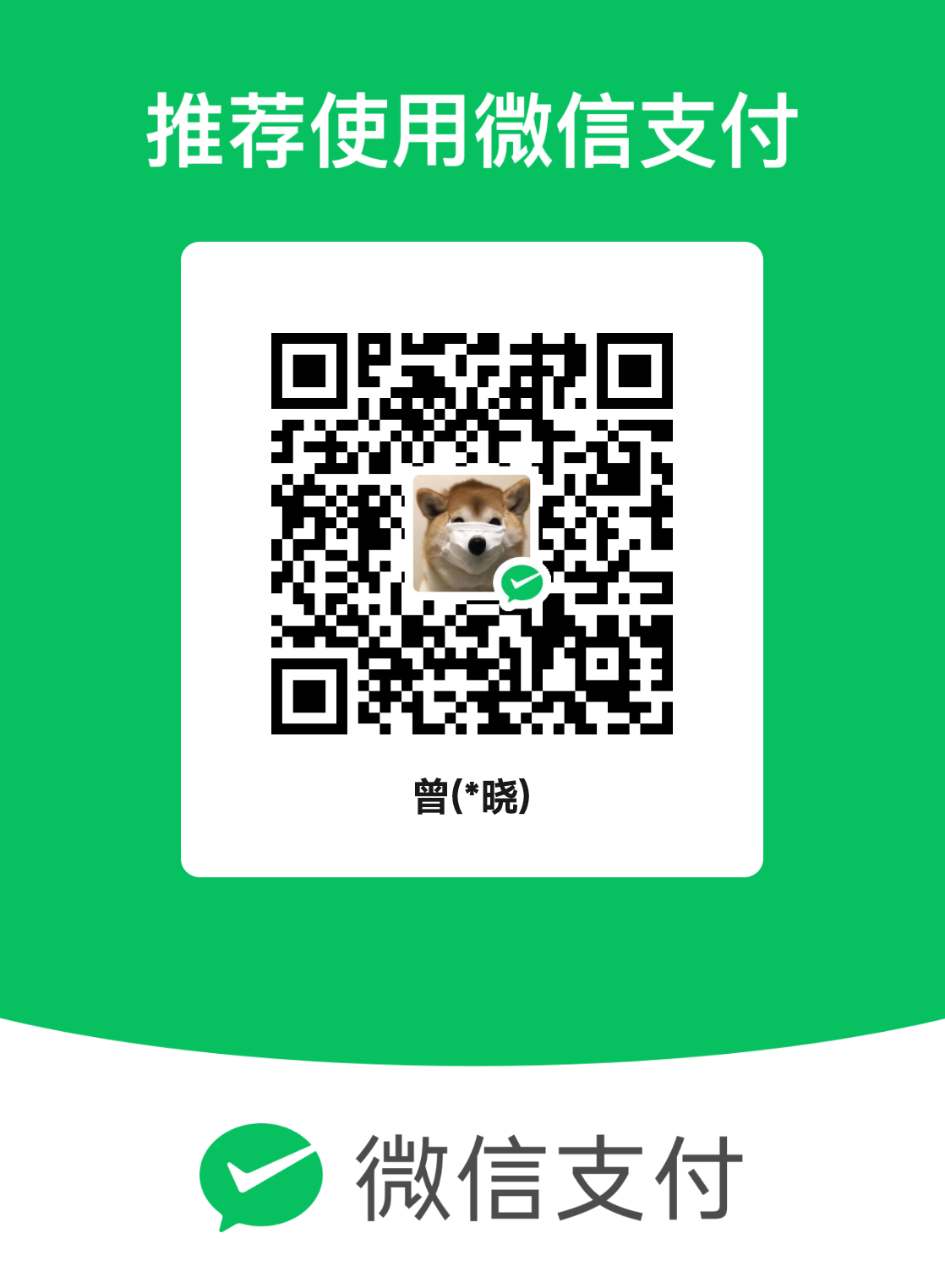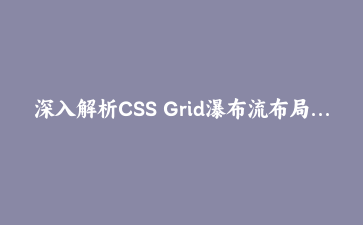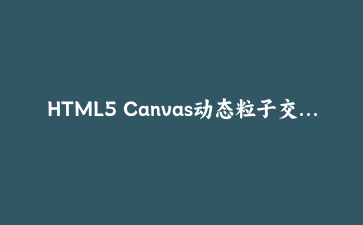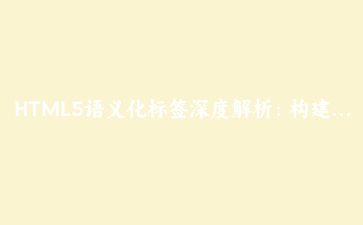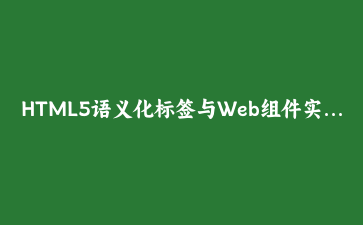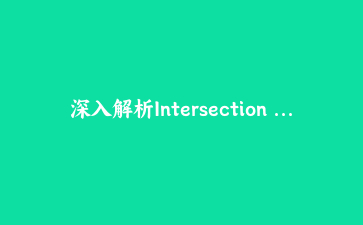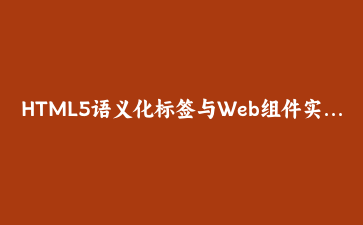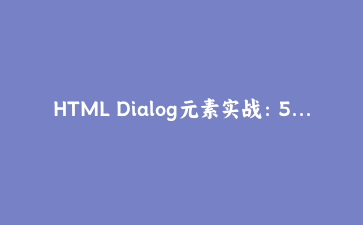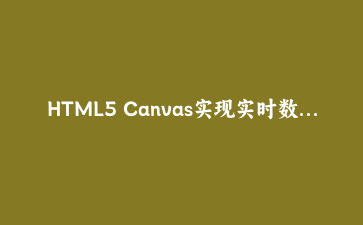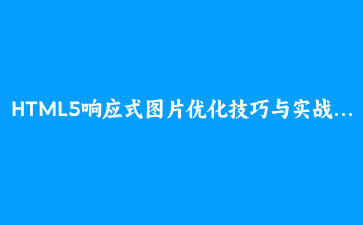发布日期:2024年1月 | 作者:Web标准专家
一、语义化HTML:现代Web开发的基石
语义化HTML不仅仅是使用正确的标签,更是构建可维护、可访问、高性能Web应用的核心技术。
语义化开发的四大优势:
- 可访问性提升
- 屏幕阅读器能够准确理解页面结构
- SEO优化
- 搜索引擎更好地理解内容重要性
- 代码可维护性
- 清晰的文档结构便于团队协作
- 开发效率
- 减少CSS选择器复杂度,提升渲染性能
二、结构化语义标签深度解析
1. 文档结构标签
<!-- 现代文档结构示例 -->
<body>
<header role="banner">
<nav aria-label="主导航"></nav>
</header>
<main>
<article>
<header>
<h1>文章标题</h1>
<time datetime="2024-01-15">2024年1月15日</time>
</header>
<section>
<h2>章节标题</h2>
<p>内容段落</p>
</section>
</article>
<aside aria-label="相关链接">
<section>
<h2>推荐文章</h2>
</section>
</aside>
</main>
<footer role="contentinfo">
<address>
联系我们: <a href="mailto:contact@example.com" rel="external nofollow" >contact@example.com</a>
</address>
</footer>
</body>2. 布局语义化最佳实践
<!-- 产品展示布局 -->
<main>
<section aria-labelledby="featured-products">
<h2 id="featured-products">精选产品</h2>
<div role="list">
<article role="listitem">
<header>
<h3>产品名称</h3>
<data value="299.00">¥299</data>
</header>
<p>产品描述内容...</p>
<footer>
<button aria-label="将产品名称加入购物车">加入购物车</button>
</footer>
</article>
</div>
</section>
</main>三、内容语义标签实战应用
1. 文本级语义标签
<!-- 丰富的文本语义 -->
<p>
在<mark>最新研究</mark>中显示,使用语义化HTML可以
提升<strong>30%</strong>的可访问性评分。
了解更多请访问<a href="/research" rel="external nofollow" >研究页面</a>。
</p>
<blockquote cite="https://www.w3.org/TR/html52/">
<p>HTML语义化是Web可访问性的基础。</p>
<footer>— W3C HTML5.2规范</footer>
</blockquote>
<figure>
<img src="chart.png" alt="语义化HTML使用率增长图表">
<figcaption>图1: 2020-2024年语义化HTML使用率增长趋势</figcaption>
</figure>2. 数据展示语义化
<!-- 数据表格语义化 -->
<table summary="2024年第一季度产品销售数据">
<caption>2024年Q1产品销售统计</caption>
<thead>
<tr>
<th scope="col">产品名称</th>
<th scope="col">销售量</th>
<th scope="col">销售额</th>
</tr>
</thead>
<tbody>
<tr>
<th scope="row">智能手表</th>
<td>1,200</td>
<td>¥359,800</td>
</tr>
</tbody>
<tfoot>
<tr>
<th scope="row">总计</th>
<td>5,600</td>
<td>¥1,568,000</td>
</tr>
</tfoot>
</table>四、可访问性深度优化实践
1. ARIA属性实战应用
<!-- 复杂组件的可访问性实现 -->
<div class="tabbed-interface" role="tablist" aria-label="产品分类">
<button role="tab"
aria-selected="true"
aria-controls="electronics-panel"
id="electronics-tab">
电子产品
</button>
<button role="tab"
aria-selected="false"
aria-controls="books-panel"
id="books-tab"
tabindex="-1">
图书
</button>
<div role="tabpanel"
id="electronics-panel"
aria-labelledby="electronics-tab"
tabindex="0">
<h3>电子产品分类</h3>
<!-- 产品内容 -->
</div>
<div role="tabpanel"
id="books-panel"
aria-labelledby="books-tab"
tabindex="0"
hidden>
<h3>图书分类</h3>
<!-- 图书内容 -->
</div>
</div>2. 表单可访问性优化
<!-- 完整的可访问表单 -->
<form novalidate aria-labelledby="form-title">
<h2 id="form-title">用户注册</h2>
<fieldset>
<legend>基本信息</legend>
<div>
<label for="username">用户名 <span aria-hidden="true">*</span></label>
<input type="text"
id="username"
name="username"
required
aria-required="true"
aria-describedby="username-help">
<small id="username-help">用户名应为3-20个字符</small>
</div>
<div>
<label for="email">邮箱地址</label>
<input type="email"
id="email"
name="email"
aria-describedby="email-error"
aria-invalid="false">
<span id="email-error"
role="alert"
aria-live="polite"></span>
</div>
</fieldset>
<button type="submit">注册</button>
</form>五、SEO优化语义化策略
1. 结构化数据标记
<!-- 文章页面的SEO优化结构 -->
<article itemscope itemtype="https://schema.org/Article">
<header>
<h1 itemprop="headline">HTML语义化深度指南</h1>
<div itemprop="author" itemscope itemtype="https://schema.org/Person">
<span itemprop="name">Web开发专家</span>
</div>
<time itemprop="datePublished" datetime="2024-01-15">2024年1月15日</time>
<meta itemprop="dateModified" content="2024-01-16">
</header>
<div itemprop="articleBody">
<p itemprop="description">本文深入探讨HTML语义化的核心概念...</p>
<section>
<h2>结构化标签的重要性</h2>
<p>内容详情...</p>
</section>
</div>
<footer>
<div itemprop="publisher" itemscope itemtype="https://schema.org/Organization">
<meta itemprop="name" content="Web技术博客">
</div>
</footer>
</article>六、完整项目:构建语义化博客系统
博客首页结构实现
<!DOCTYPE html>
<html lang="zh-CN">
<head>
<meta charset="UTF-8">
<meta name="viewport" content="width=device-width, initial-scale=1.0">
<title>技术博客 - 探索Web开发前沿技术</title>
<meta name="description" content="专注于HTML语义化、可访问性和现代Web标准的深度技术博客">
</head>
<body>
<a href="#main-content" rel="external nofollow" class="skip-link">跳转到主要内容</a>
<header role="banner">
<div class="site-branding">
<h1><a href="/" rel="external nofollow" rel="external nofollow" >技术前沿</a></h1>
<p>探索Web开发的无限可能</p>
</div>
<nav aria-label="主导航">
<ul role="menubar">
<li role="none"><a href="/" rel="external nofollow" rel="external nofollow" role="menuitem">首页</a></li>
<li role="none"><a href="/articles" rel="external nofollow" role="menuitem">文章</a></li>
<li role="none"><a href="/tutorials" rel="external nofollow" role="menuitem">教程</a></li>
</ul>
</nav>
</header>
<main id="main-content" tabindex="-1">
<section aria-labelledby="featured-articles">
<header>
<h2 id="featured-articles">精选文章</h2>
<p>深度技术解析和最佳实践</p>
</header>
<div class="articles-grid" role="list">
<article class="featured-article" role="listitem" itemscope itemtype="https://schema.org/Article">
<header>
<h3 itemprop="headline"><a href="/article/semantic-html" rel="external nofollow" >HTML语义化深度指南</a></h3>
<div class="article-meta">
<time itemprop="datePublished" datetime="2024-01-15">2024年1月15日</time>
<span itemprop="author">Web标准专家</span>
</div>
</header>
<p itemprop="description">探索HTML语义化的核心概念和实际应用场景...</p>
<footer>
<ul class="article-tags">
<li><a href="/tag/html" rel="external nofollow" rel="tag">HTML</a></li>
<li><a href="/tag/accessibility" rel="external nofollow" rel="tag">可访问性</a></li>
</ul>
</footer>
</article>
</div>
</section>
<aside aria-label="侧边栏">
<section>
<h2>关于作者</h2>
<address>
<p>Web开发专家,专注于前端标准和可访问性</p>
<p>联系邮箱: <a href="mailto:author@example.com" rel="external nofollow" >author@example.com</a></p>
</address>
</section>
</aside>
</main>
<footer role="contentinfo">
<nav aria-label="页脚导航">
<ul>
<li><a href="/about" rel="external nofollow" >关于我们</a></li>
<li><a href="/contact" rel="external nofollow" >联系我们</a></li>
<li><a href="/privacy" rel="external nofollow" >隐私政策</a></li>
</ul>
</nav>
<p>© 2024 技术前沿博客。保留所有权利。</p>
</footer>
</body>
</html>七、性能与最佳实践总结
语义化开发的黄金法则
- 内容优先: 根据内容含义选择标签,而非外观
- 渐进增强: 从语义化HTML开始,逐步添加样式和交互
- 可访问性第一: 确保所有用户都能访问内容
- SEO友好: 合理使用结构化数据和微格式
- 代码简洁: 避免不必要的嵌套和冗余标签
常见陷阱与解决方案
| 问题 | 错误做法 | 正确做法 |
|---|---|---|
| 按钮实现 | <div onclick=”…”>点击我</div> | <button type=”button”>点击我</button> |
| 标题结构 | <div class=”title”>章节标题</div> | <h2>章节标题</h2> |
| 导航菜单 | <div class=”nav”>…</div> | <nav aria-label=”…”>…</nav> |
总结
语义化HTML是现代Web开发的基石技术,它带来的价值远超表面所见:
- 为所有用户提供平等的访问权利
- 提升网站在搜索引擎中的可见性
- 构建更可维护和可扩展的代码基础
- 为团队协作建立清晰的标准
掌握语义化开发不仅仅是学习标签用法,更是培养一种以内容为中心、以用户为导向的开发思维。建议从现有项目开始,逐步重构和改进,在实践中深化对语义化理念的理解和应用。
